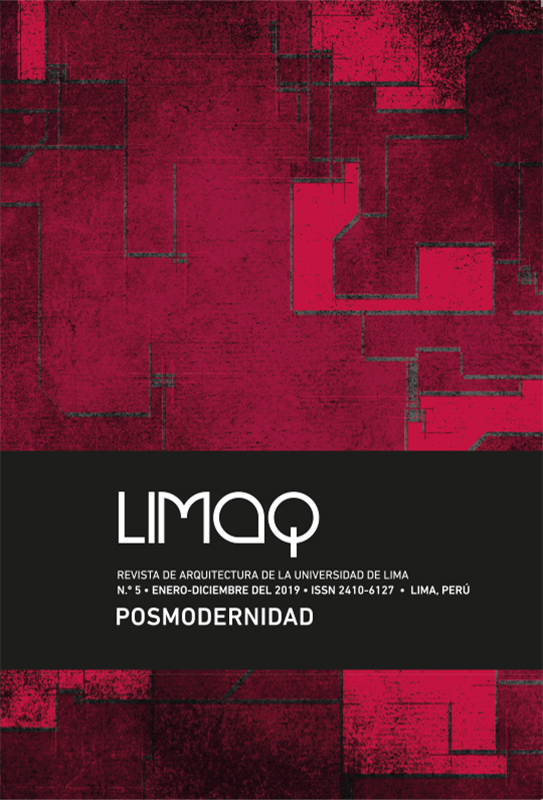From austere oligarchy to happy anarchy. Considerations on postmodernity
DOI:
https://doi.org/10.26439/limaq2019.n005.4525Keywords:
Postmodernity, architecture, human habitation, architects, users, producers, consumersAbstract
In its ancestral service provision to human habitation, current architecture competes with other types of virtual habitation, alien to the immediacy and tangibility of its own territory over thousands of years around the world. Against overwhelming odds, but committed to win, architects confront with the challenge of persuading internet users to find themselves and their environment again by recognizing themselves in their self and circumstance, which are inseparable from each other. Through a provisional diagnosis of the “misplaced” situation of the third-millennium architecture, this paper aims to share the hope of a new “encounter of the first kind” of human habitation. To this effect, it explores reference books defining postmodernity and connects them to the features that, still nowadays, characterize it.
Downloads
References
Alberti, L. B. (1977). Los diez libros de architectura [trad. Francisco Lozano, ed. facsímil]. Valencia: Albatros. (Trabajo original publicado en 1485)
Alexander, C. (1964). Notes on the synthesis of form. Cambridge: Harvard University Press.
Alexander, C. (1977). A pattern language. Nueva York: Oxford University Press.
Banham, R. (1960). Theory and design in the first machine age. Londres: Architectural Press.
Banham, R. (1966). The new brutalism. Londres: Architectural Press.
De Fusco, R. (1967). Architettura come mass-medium. Bari: Dedalo Libri.
Giedion, S. (1941). Space, time and architecture. The growth of a new tradition. Cambridge: Harvard University Press.
Giedion, S. (1948). Mechanization takes command. Nueva York: Oxford University Press.
Jencks, Ch. (1971). Architecture 2000: prediction and methods. Londres: Studio Vista.
Jencks, Ch. (1977). The language of post-modern architecture. Nueva York: Rizzoli.
Kubrick, S. (productor y director). (1968). 2001: A space odyssey [película]. Estados Unidos: Metro-Goldwyn-Mayer.
Le Corbusier (1950). Le modulor. Boulogne-sur-Seine: L’Architecture d’Aujourd’hui.
Pellegrini, A. (1965). Para contribuir a la confusión general. Buenos Aires: Nueva Visión.
Pollack, S. (director). (2005). Sketches of Frank Gehry [película]. Estados Unidos: Sony Pictures Classics.
Rossi, A. (1975). Scritti scelti sull’architettura e la città. 1956-1972. Milán: Cooperativa Libraria Universitaria del Politécnico de Milán.
Smithson, A., y Smithson, P. (1957). Cluster city, a new shape for the community. The Architectural Review, 122(11), 333-336.
Spielberg, S. (director). (1977). Close encounters of the third kind. Estados Unidos: Columbia Pictures; EMI Films; Phillips Productions.
Sudjic, D. (2007). La arquitectura del poder. Barcelona: Ariel.
Tafuri, M. (1968). Teorie e storia dell’architettura. Bari: Laterza.
Venturi, R. (1966). Complexity and contradiction in architecture. Nueva York: Museum of Modern Art.
Wright, F. L. (1957). A testament. Nueva York: Horizon Press.



